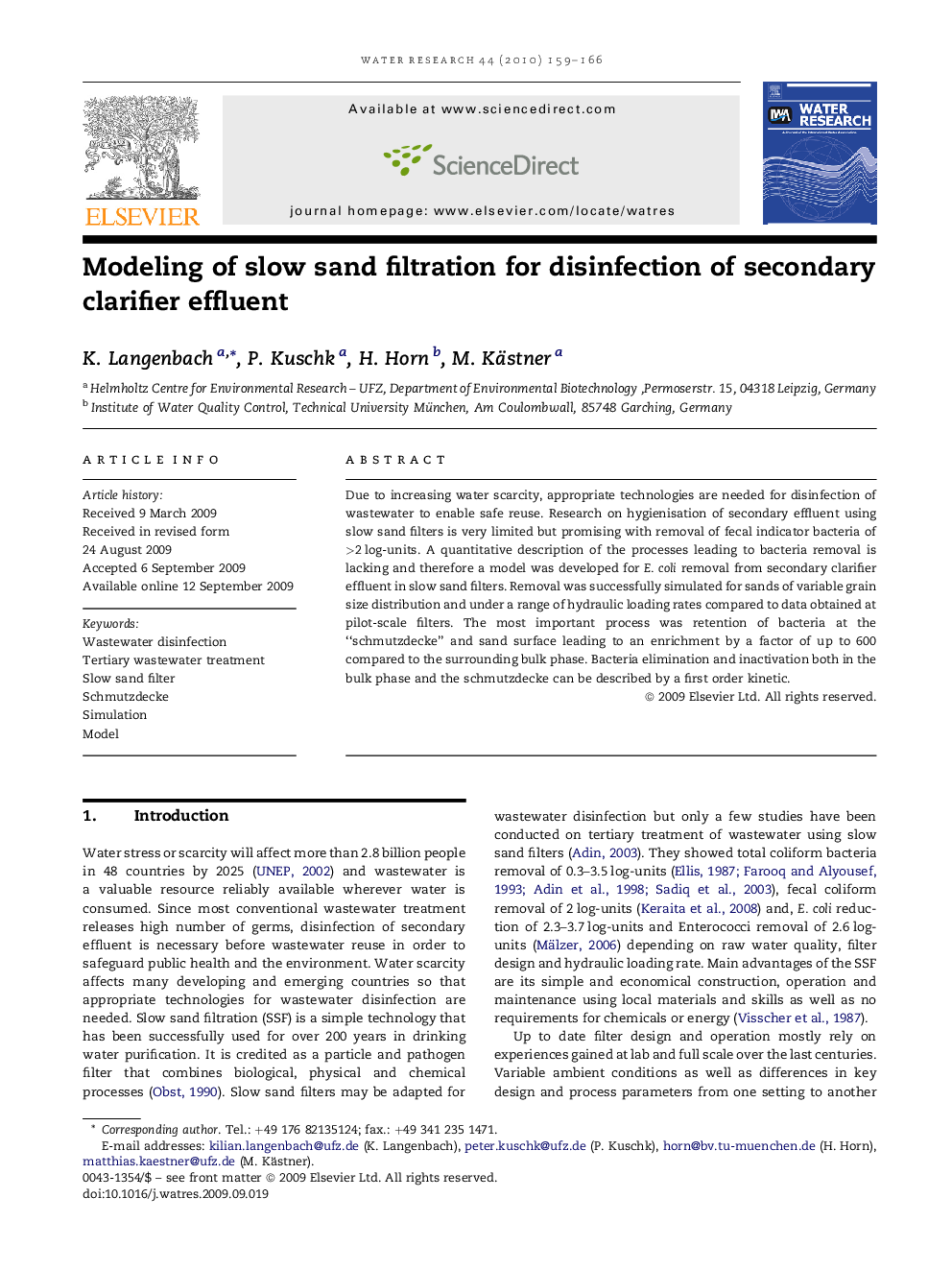| Article ID | Journal | Published Year | Pages | File Type |
|---|---|---|---|---|
| 6368196 | Water Research | 2010 | 8 Pages |
Due to increasing water scarcity, appropriate technologies are needed for disinfection of wastewater to enable safe reuse. Research on hygienisation of secondary effluent using slow sand filters is very limited but promising with removal of fecal indicator bacteria of >2Â log-units. A quantitative description of the processes leading to bacteria removal is lacking and therefore a model was developed for E. coli removal from secondary clarifier effluent in slow sand filters. Removal was successfully simulated for sands of variable grain size distribution and under a range of hydraulic loading rates compared to data obtained at pilot-scale filters. The most important process was retention of bacteria at the “schmutzdecke” and sand surface leading to an enrichment by a factor of up to 600 compared to the surrounding bulk phase. Bacteria elimination and inactivation both in the bulk phase and the schmutzdecke can be described by a first order kinetic.
